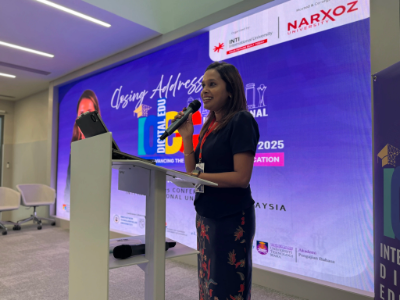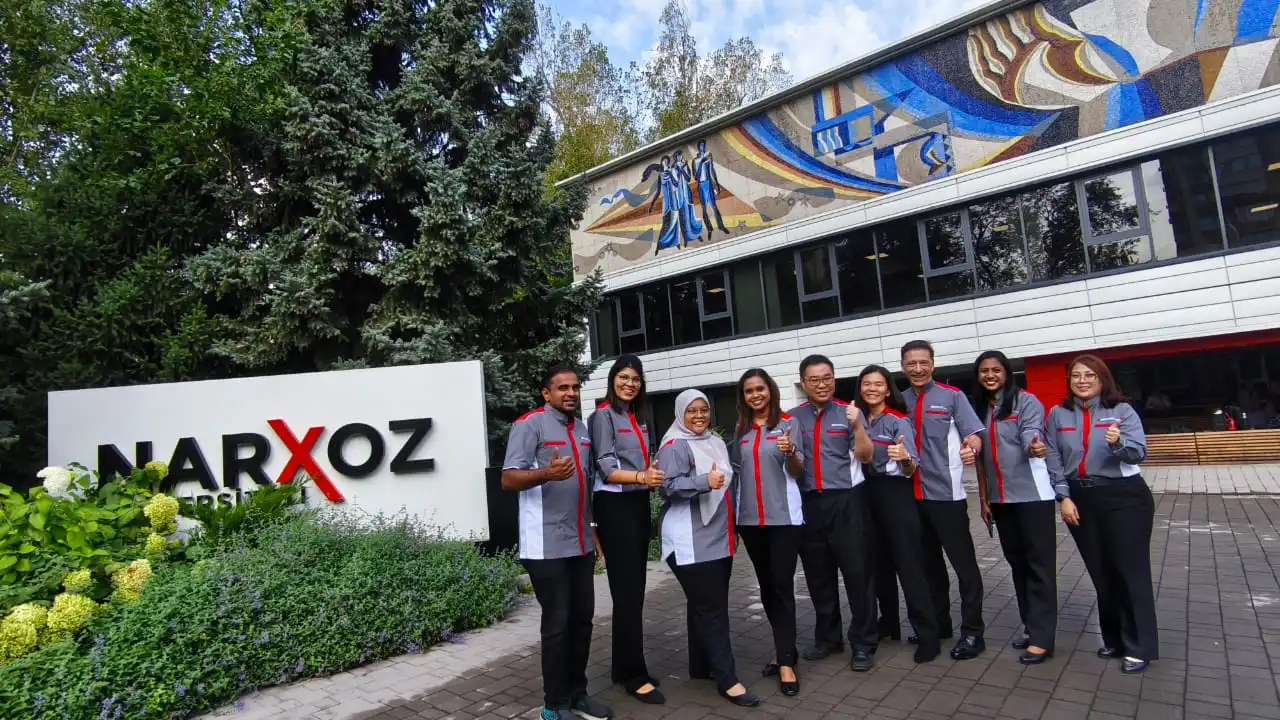In an age when short-form videos shape how students learn and communicate, educators are reimagining lessons to be more engaging, accessible, and relevant. At the International Digital Education Conference (IDEC 2025), Jane Xavierine, from the Faculty of Education and Liberal Arts (FELA), INTI International University, presented an award-winning study that does precisely that, merging the worlds of social media and education.

Jane Xavierine, from the Faculty of Education and Liberal Arts at INTI International University, presented her award-winning paper and also served as Co-Chair of the International Digital Education Conference (IDEC 2025).
Jane, a winner of the Best Track Paper Award, explored how short-form video platforms like TikTok can enhance vocabulary retention among English as a Second Language (ESL) learners. Drawing on her students’ informal learning habits, she examined how TikTok’s combination of sound, visuals, text, and gestures could enhance engagement and recall.
“I noticed students using new words that they had picked up from short videos,” she shared. “That observation led me to explore whether TikTok’s multimedia format could support intentional vocabulary learning and help connect informal habits with formal instruction.”
Her findings suggest that when used purposefully, social media can be a powerful supplement to formal education. Among the TikTok features analysed, text-on-screen, repetition, and visual-gesture pairing stood out as the most effective for vocabulary learning. Text on screen helped bridge the connection between spoken and written language, while repetition — within a single video or across similar clips — significantly improved retention. Visuals and gestures, meanwhile, provided strong mental cues that made new words easier to recall.
These elements collectively support microlearning, an approach that breaks lessons into concise, easily digestible segments. For language educators, TikTok’s format offers a framework for delivering short, focused lessons that students can review repeatedly at their own pace. By curating relevant clips or creating short, goal-aligned videos, teachers can reinforce classroom learning with authentic, engaging examples from everyday media.
Jane emphasised that TikTok should not replace traditional teaching but rather extend it. The platform’s accessibility allows learners to stay connected to lessons beyond the classroom, nurturing independent learning habits while still grounded in structured guidance. “TikTok complements rather than replaces classroom teaching,” she explained. “It offers authentic examples that can model vocabulary and pronunciation or even serve as prompts for discussion. It fits microlearning very well and encourages students to keep learning beyond the classroom.”
One challenge identified in her research was distraction—a natural consequence of using a social media platform. Jane and her team addressed this by establishing structured learning routines, including curated watch lists and post-viewing reflections, to ensure engagement stayed purposeful. Interestingly, students became more reflective once their viewing had clear goals. They started noticing pronunciation patterns, captions, and word meanings more deliberately, turning casual scrolling into a meaningful learning experience.

The hybrid conference gathered educators, researchers, and innovators from 17 countries to share insights on digital learning and pedagogy.
Building on these insights, Jane provided several key points for educators aiming to incorporate social media tools like TikTok into their teaching methods. The first is intentional design to align each activity with specific learning outcomes. The second is guided reflection, which assists students in processing what they consume rather than passively watching it. Lastly, educators must foster digital literacy so pupils can evaluate and adapt online content responsibly.
“Begin with learning outcomes,” Jane advised. “Curate or create short, goal-aligned clips, host them in your learning platform for reflection, and include a brief check of understanding. Used this way, TikTok becomes an engaging supplement that supports strong pedagogy.”
Apart from her research, Jane also served as Co-Chair of IDEC 2025, organised by the Faculty of Education and Liberal Arts at INTI International University and Narxoz University, Kazakhstan. The hybrid conference united educators, researchers, and innovators from 17 countries across Asia, Europe, and Africa to share ideas on digital education and innovation.
Featuring over 60 research papers, keynote addresses, and pre-conference workshops led by experts from Malaysia, Finland, and Korea, IDEC 2025 examined how technology, ethics, and pedagogy converge in shaping the future of education. Workshop topics included AI for ethical academic writing, design-based research methodologies, and the application of virtual reality in transformative classrooms.

With its international participation and strong academic representation, IDEC 2025 reflected the growing global commitment to advancing sustainable and technology-driven education.
Several faculty members were recognised as Best Track Presenters and Best E-Poster Awardees for their impactful research in AI, online learning, and digital literacy. Among the honourees were Ezza Binti Mad Baguri, Ah Huai Ah Chan, Jane Xavierine, Li Tao, Rachel Sing-Ee Tan, and Roy Senthil Kumar.
The discussions at IDEC 2025 showed how quickly teaching and learning are continuing to change. From classroom techniques to digital experiments like TikTok-based learning, educators are discovering new ways to connect with students and, more importantly, to keep their curiosity alive about what comes next